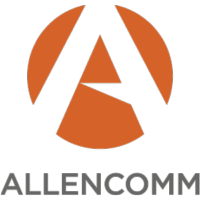Changes In L&D Staffing
The corporate workplace is changing, and so are companies’ staffing needs. Over the last few years, an increase in remote work, rapid change in learning technology, and a climate of economic volatility have caused companies to rethink how and when to hire.
Businesses of all sizes are realizing the need to stay nimble so they can adapt to the demands of an ever-changing competitive landscape. This requires the ability to add capacity or specialized expertise when conditions change. Companies large and small now see the value of flexible resource models that are a strategic mix of in-house talent, vendor partners, and independent experts.
What’s Changing In L&D Staffing
The temporary staffing model has been around for a long time, but the model is changing. It used to be a transactional model, designed primarily to boost capacity as efficiently as possible. A staffing professional was, first and foremost, a recruiter. The needs, however, are changing. A study by Brandon Hall Group shows that more than one-third of L&D teams rank a lack of staffing among their greatest challenges. As roles in this field have become more specialized, the need for expertise has become as important as capacity. Consider the differences between the roles of trainer, Instructional Designer, learning strategist, learning technologist, learning project manager, etc. To this specialization, we should also add industry-specific factors—the technical complexity of products, regulatory environments, unique learning use cases, etc.
For this reason, specialized firms like AllenComm are taking a different approach. They lead with their knowledge of Learning and Development. They begin with an assessment of your needs. This consultative process is very different from a transactional recruiting process focused on job titles and resume keywords.
The appeal for L&D organizations is the ability to add new skills quickly, to temporarily ramp up operations, and to tackle unforeseen priorities that come up during the year—those that may not have been anticipated in the annual budget. Compared to a traditional hiring process, which can take months, sourcing temporary talent can be as much as three times faster.
Temporary Talent From A Long-Term Partnership
While there are many sources for independent contractors, those sources often bring additional risk and administrative hassle. By working with a talent firm, the need for multiple resources can usually be handled as part of a single contract vehicle, rather than having to set up individual contracts for each individual resource. Beyond the convenience, however, is the advantage of additional oversight, including support when things are not going as planned. This additional support can help to ensure that onboarding is complete and that expectations are being met.
“At AllenComm, we design a workforce outsourcing plan specific to a company’s needs,” explains Lauren Prisco, Director, AllenComm Talent. “This may help with the implementation of new learning technologies or new programs. It may also provide efficiencies that enable companies to better leverage their in-house learning leaders and experts.” There are several advantages to this approach. It offers an organization:
- Better upfront alignment on goals and objectives
- A tailored plan to suit the company’s needs, costs, and timeline—rather than a one-size-fits-all solution
- A focus on learning expertise, industry context, and teamwork
- Minimal overhead and administration
- More options when things don’t go as planned
Finding The Talent You Really Need
It has never been easier to connect with individual professionals. On a regular basis, you’ll see individuals on LinkedIn who have made the decision to go independent with their own practice. The challenge isn’t the availability of talent, it’s finding the right talent to meet the specific needs of your organization, the expectations of your stakeholders, and the processes and culture of your existing team.
The following guidelines can help:
- Define the objectives and expected outcomes. At AllenComm, we recommend looking at the objectives and outcomes for the learning initiative—not just for the individual role. This ensures that the talent appreciates the end goals and can look for ways to contribute more. This will encourage more team contribution.
- Match the expertise to the need. The mix of an individual’s experience in the learning domain, in the industry, and working with similar teams should be considered. It’s important to look beyond the name of the title or role. What value will be generated? In what context will the talent need to thrive?
- Be cautious of canned processes. Your organization is unique, and you’ll want a talent provider who can tailor their process to meet the specific needs of your organization, team, and initiative.
- Assess the depth of expertise. There are few skills where the level of proficiency doesn’t matter. For example, it’s not enough to look for experience in a specific tool or platform. The right talent provider can evaluate proficiency across a much broader range of learning technology.
A Smart Investment
Many Learning and Development organizations have workforce needs that go beyond filling vacancies. They are looking for specialized skills and industry-specific experience that will be an accelerator and a force-multiplier for their internal team. Traditional staffing models are largely unable to meet these more strategic needs.
Partnering with a specialized L&D staffing firm can not only be more timely but more effective. By prioritizing upfront analysis and by matching talent to specific project goals, a consultative approach will increase the likelihood of success and mitigate the risks associated with independent contractors. Given the rapid rate of change, developing this type of partnership can increase the flexibility and the value that L&D brings to the larger organization.

